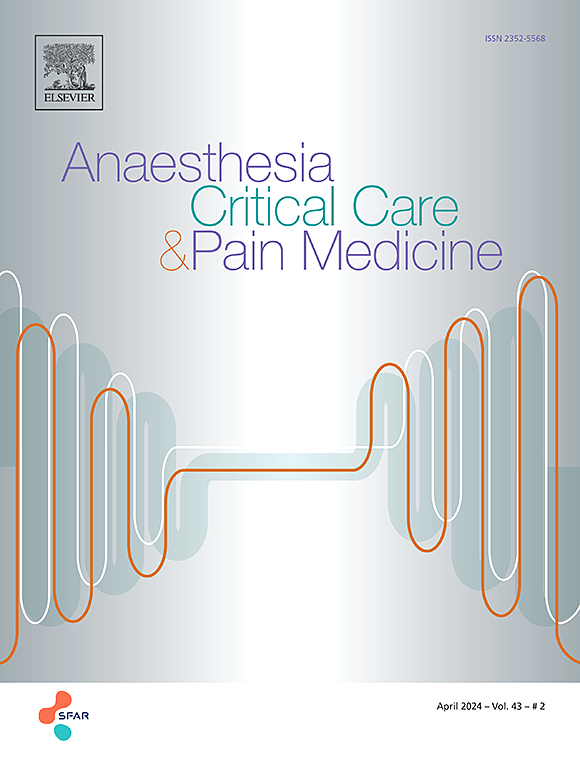Pancreatic Stone Protein in patients with liver failure: A prospective pilot cohort study
IF 3.7
3区 医学
Q1 ANESTHESIOLOGY
引用次数: 0
Abstract
Background
Pancreatic Stone Protein (PSP) seems to have higher accuracy for sepsis detection compared to other biomarkers. As PSP has never been studied in patients with liver failure (LF), our purpose was to assess its accuracy for diagnosis of infection and prognosis in this population.
Methods
We conducted a prospective pilot cohort study on patients with LF consecutively admitted to the Intensive Care Unit of a liver transplant center in 2021−2023. Ongoing overt infection was an exclusion criterion. Daily measurements of biomarkers were performed until discharge, death, or for 21 days. Analysis was performed by adjusting the baseline for the first infection episode (median on D3), which was the reference for those non-infected.
Results
Sixteen patients were included, 7 with acute and 9 with acute-on-chronic LF. Median age was 54 (interquartile range 42−64) years, half were female, with admission SOFA score of 10 (IQR 8−12). Hospital mortality was 43.8% (n = 7). An infection was observed in 8 patients, who presented non-significantly higher levels of PSP than non-infected ones during follow-up. Levels were higher in non-survivors than survivors (p < 0.05 from D4 on and since the day of infection considering only infected patients). Similarly, patients under renal replacement therapy had higher PSP levels than others (p < 0.05, D2 to D7 after admission).
Conclusion
This pilot study provides early insights into PSP kinetics, suggesting a potential role for prognosis in patients with LF. PSP rises in both ALF and ACLF to levels sustainably higher than those expected for healthy adults. Further research is needed to reassess its diagnostic accuracy for infection and redefine cut-offs in this population.
求助全文
约1分钟内获得全文
求助全文
来源期刊

Anaesthesia Critical Care & Pain Medicine
ANESTHESIOLOGY-
CiteScore
6.70
自引率
5.50%
发文量
150
审稿时长
18 days
期刊介绍:
Anaesthesia, Critical Care & Pain Medicine (formerly Annales Françaises d''Anesthésie et de Réanimation) publishes in English the highest quality original material, both scientific and clinical, on all aspects of anaesthesia, critical care & pain medicine.
 求助内容:
求助内容: 应助结果提醒方式:
应助结果提醒方式:


